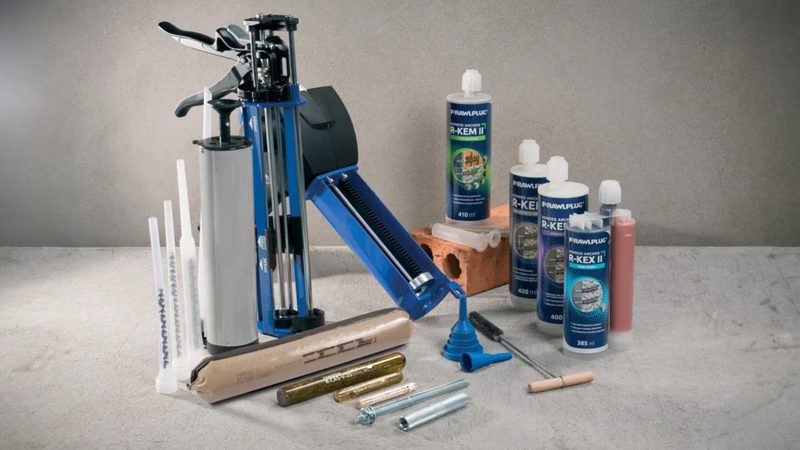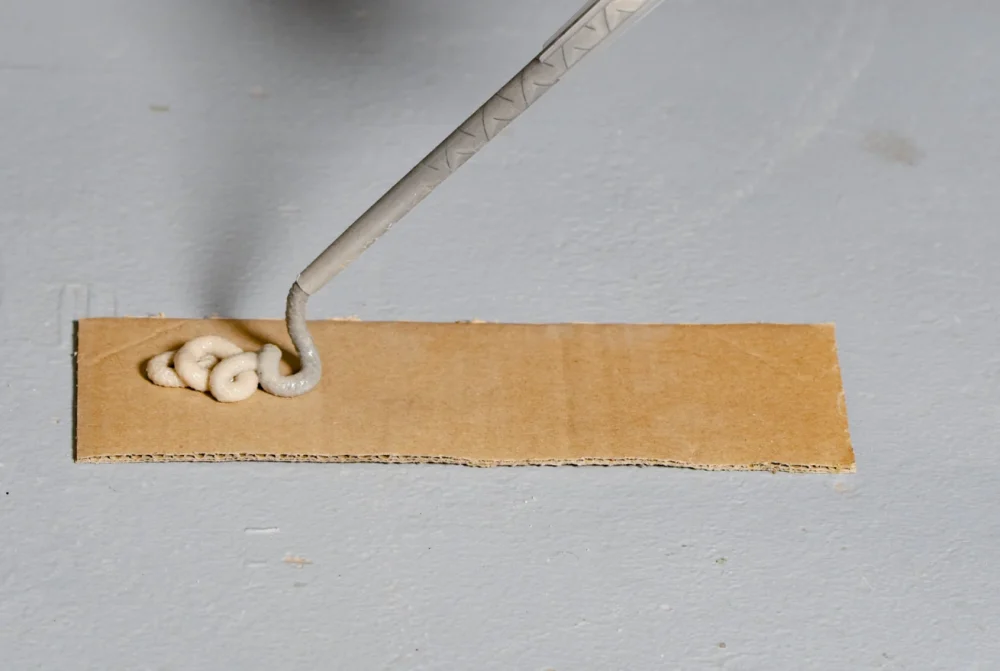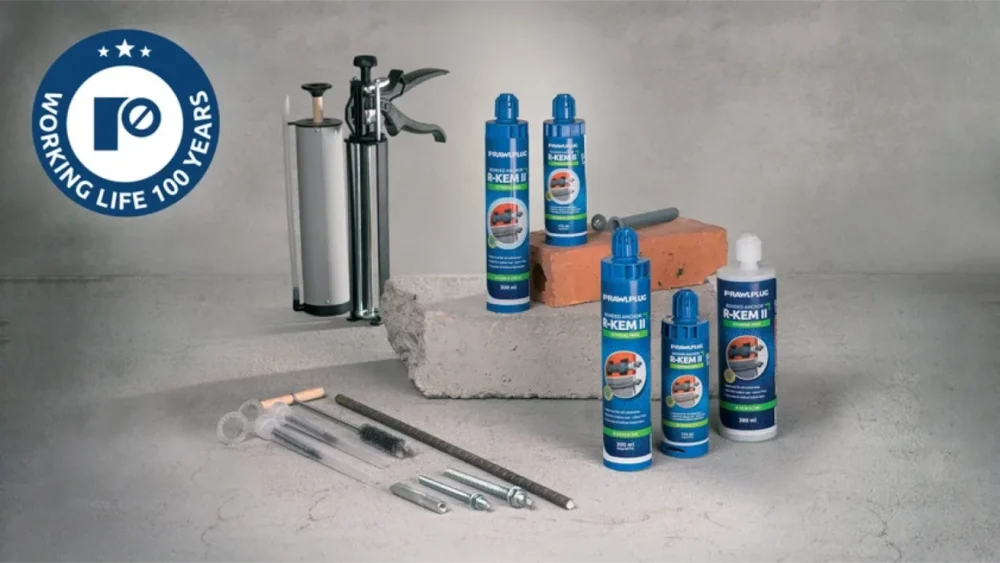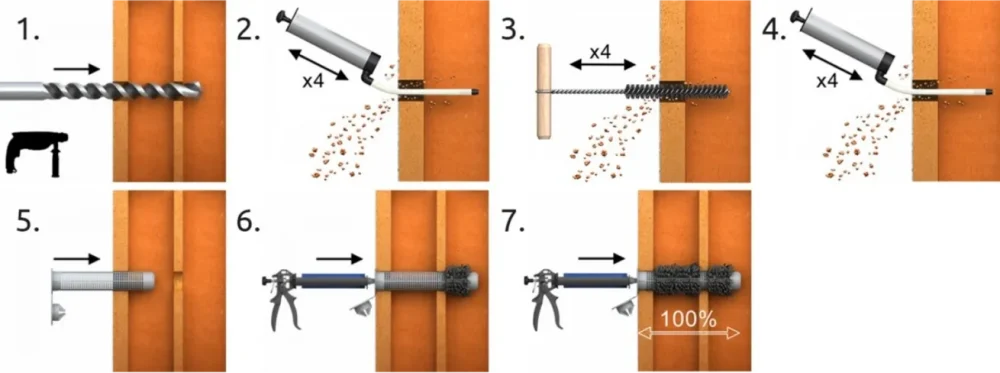Need more information about Rawlplug? go to brand site

Modern construction technologies offer a wide range of solutions for even the most demanding projects. Therefore, before choosing a chemical fixing, it is worth asking – how do bonded anchors works? Let’s take a closer look at this.
The key to understanding the potential of chemical anchors is their unique ability to form extremely strong bonds. The variety of resins available allows the anchor to be tailored to the specific requirements of each substrate and application. Most of them perform well in concrete, in both the compression and tension zones, offering exceptional strength and reliability. The polyester anchor, on the other hand, which is also suitable for weaker materials, is used for both advanced construction projects and home repairs.
What are bonded anchors?
Anchors in the construction industry play a very important role in ensuring the stability and safety of structures. The high loads they are able to carry make chemical anchors an increasingly popular solution for contractors. Traditional mechanical anchors, such as concrete anchors, create a connection to the substrate through strut forces, generating high substrate stress, while all chemical anchors achieve their properties through adhesion.
In practice, the choice between chemical and mechanical anchors depends on the specific project and installation conditions. Features such as the load-bearing capacity of chemical anchors and their ability to absorb and distribute forces in the material make them a standard in modern construction, where precision and adaptation to technical conditions play a primary role. Such solutions allow projects of increased complexity to be realised, guaranteeing durability and reliability for years to come.
Types of bonded anchors
Various types of chemical anchors are available on the market. Their basic distinction is a division based on the substrate material in which the anchor is to be installed. Understanding this division is the key to answering the question: how do I choose a chemical anchor?
Rawlplug chemical anchors for concrete stand out thanks to their innovation and reliability, becoming the choice of industry professionals. Before making a purchase, it is advisable to consider the specific requirements of the project, such as resistance to external elements or the type of loads that will affect the anchor. These aspects directly influence the decision to choose the right type of chemical fixing.
Bonded anchors. What can you find on the market?
- Styrene-free polyester anchors are particularly valued for the wide range of substrates in which they can be applied.
- Vinylester anchors, known for their exceptional strength and resistance to chemical compounds, are ideal for chemically aggressive environments. They are also available in capsules.
- Hybrid anchors, combining the best features of polyester and vinylester anchors, represent a versatile solution for the most demanding applications.
- Epoxy anchors, being the strongest chemical anchors among the available solutions, outdistance other fixings with their unparalleled performance and superior properties.
Understanding the differences between individual types of bonded anchors enables making informed choices of the solutions best suited for specific applications.
How does a bonded anchor work? Design of bonded anchors – epoxy anchor example
When we think of chemical anchors, we rarely consider what lies behind their extraordinary power. How is it that these seemingly simple substances can bond different materials so effectively, withstanding weight, pressure and even extreme weather conditions? The secret lies in their ingredients – specialised mixtures of different compounds. Understanding the properties of an anchor can allow you to realise its potential in construction projects.

The cartridge-type bonded anchor represents a two-component system, meaning that it comprises two separate parts, each containing different ingredients that are mixed during application.

The difference in colour of the resin is due to the mixing process. The lighter part means that the components have not yet been thoroughly mixed in the nozzle.
What are the benefits of bonded anchors?
- mechanical strength, which is the ability to resist specific mechanical loads without damage, deformation or loss of function.
- Bonded anchors effectively dissipate stresses in the base material, ensuring stability, even in heavy-duty applications, minimising the risk of substrate damage.
- The high strength of bonded anchors makes them suitable for installation jobs where prolonged resistance to dynamic and static loads is required. The service life of a bonded anchor used for fixing purposes, i.e. the time for which the anchor retains its mechanical and adhesive properties, can vary depending on a number of factors. As a rule of thumb, when properly applied under adequate conditions, bonded anchors can remain fully functional for as long as several decades, and the chemical anchors from Rawlplug – up to a hundred years!

- Bonded anchors are also known as being suitable for operation under a variety of weather and chemical conditions, which makes them highly adaptable. Additionally, being essentially fluid in substance, bonded anchors can be used in hard-to-reach places where traditional mechanical anchors cannot be installed.
- Precise dosing and accurate application of bonded anchors increase fixing efficiency. Chemical anchoring systems enable high-accuracy dosing and application of resin at the fixing point, which minimises waste and streamlines installation work.
- Chemical anchors can be applied in close proximity of substrate edges or other anchorage points, which proves particularly useful in places where it would be impossible or risky to use traditional mechanical anchoring methods on account of the base material cracking risk.

How to perform correct fixing using a bonded anchor?
Correct fixing of various materials using bonded anchors is fundamental to ensuring the stability and security of any structure. The choice of the right anchoring solution starts with an assessment of the base material, the fixing conditions, and the load capacity of a given chemical anchor. It is always good to be sure that the elements to be installed using a bonded anchor will remain firmly and securely fixed for a long time.

Step-by-step instruction of bonded anchor application
- The first step to take when performing installation by means of bonded anchors is obviously to drill a hole using a suitable drill bit.
- Remember to thoroughly clean the hole of any dust, dirt, and any debris, using a cleaning brush and a pump.

- Next, with a cartridge system in use, make sure to thoroughly mix the two anchor components and fill the hole correctly with resin using a dedicated dispenser gun. When applying the resin in concrete, fill the hole to 75% of its depth, while in porous substrates, such as brick or hollow blocks, the recommendation is to insert a mesh sleeve and fill the hole in 100%. Adequate distribution of resin ensures even anchor adhesion to the substrate.
- The element being embedded in the substrate should be placed inside the hole before the resin has fully set, since the chemical bond must form a lasting and strong joint with the base material. The time it takes for the resin to begin to harden varies depending on the anchor type and the environmental conditions. In many cases, acting quickly and with utmost precision is a must.